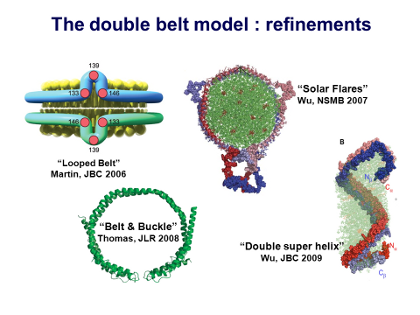Chapman - Figure 6 - Double belt model of HDL particles Text
This Figure illustrates schematic models of the simplest type of HDL particles (these are the nascent, discoid particles discussed in the previous Figure). There have been several proposals as to how ApoA-I may be organized in these discoidal particles; however, it turns out that ApoA-I likes to form a structure in which 2 ApoA-I copies interact closely and link together. They are well designed to couple up and bind to each other, although this is not a covalent linkage; rather they associate in a rather structured manner – and the result gives rise to the special discs shown on this Figure.
The next question, then, will be, how do the different types of discs shown here, containing 2 copies of ApoA-I, then become the more spherical particles, and even more importantly, how many copies of ApoA-I do the mature, spherical HDL particles contain? That is a puzzling but important question, because once we can answer that, we can progress in our understanding of HDL biology.
J Clin Lipidol. 2011; 5(6).